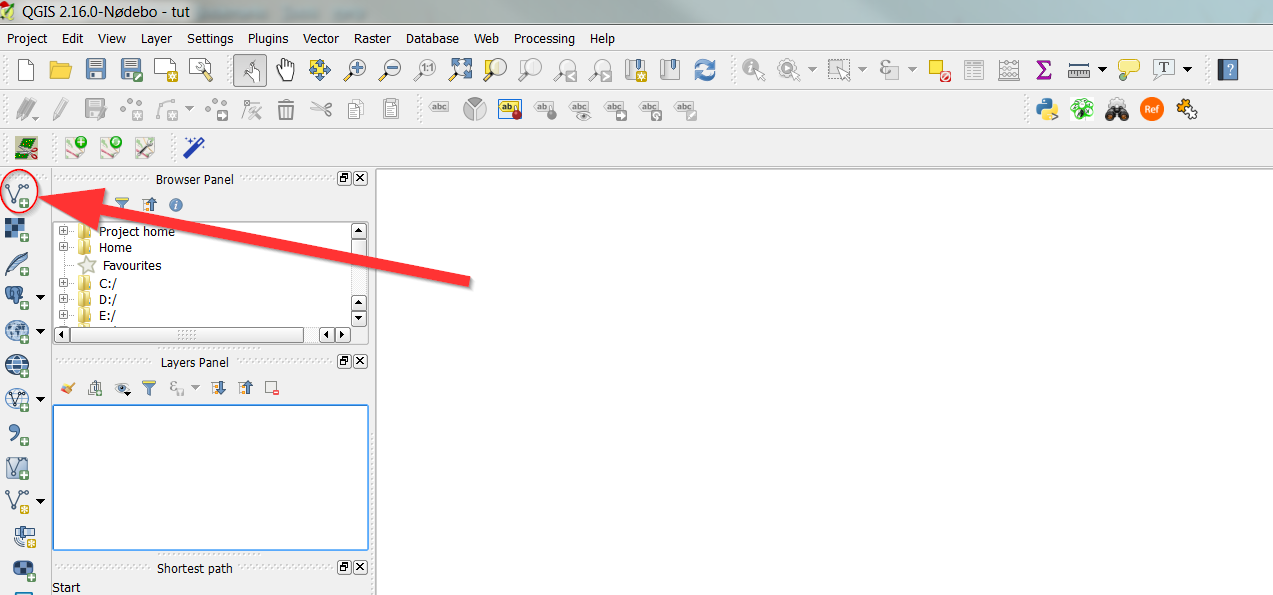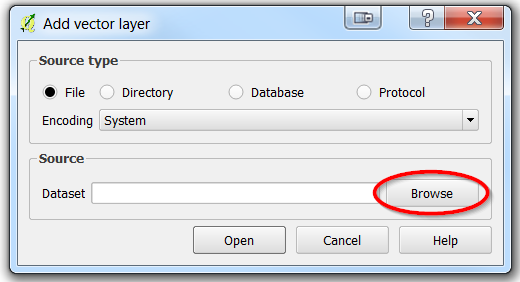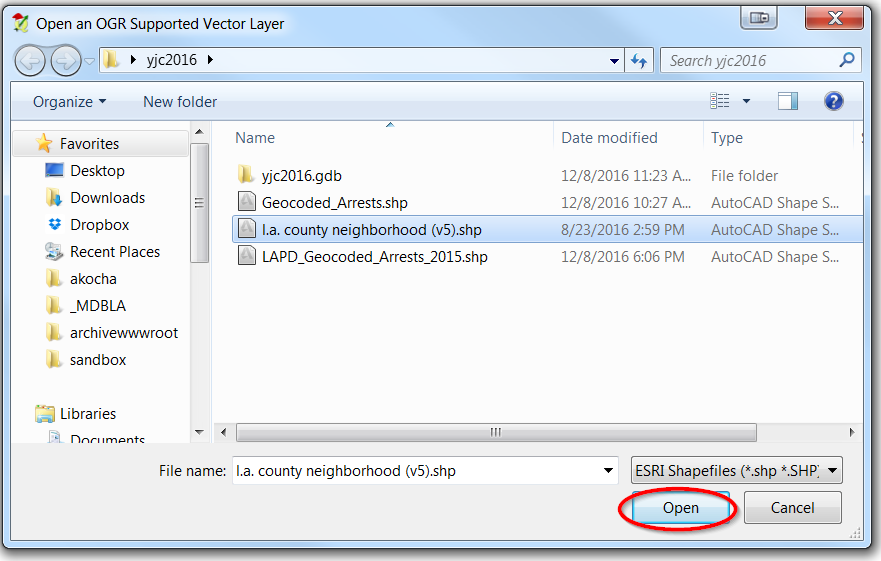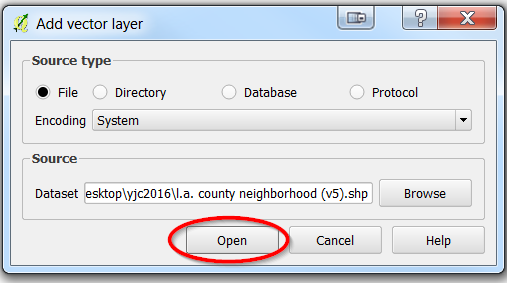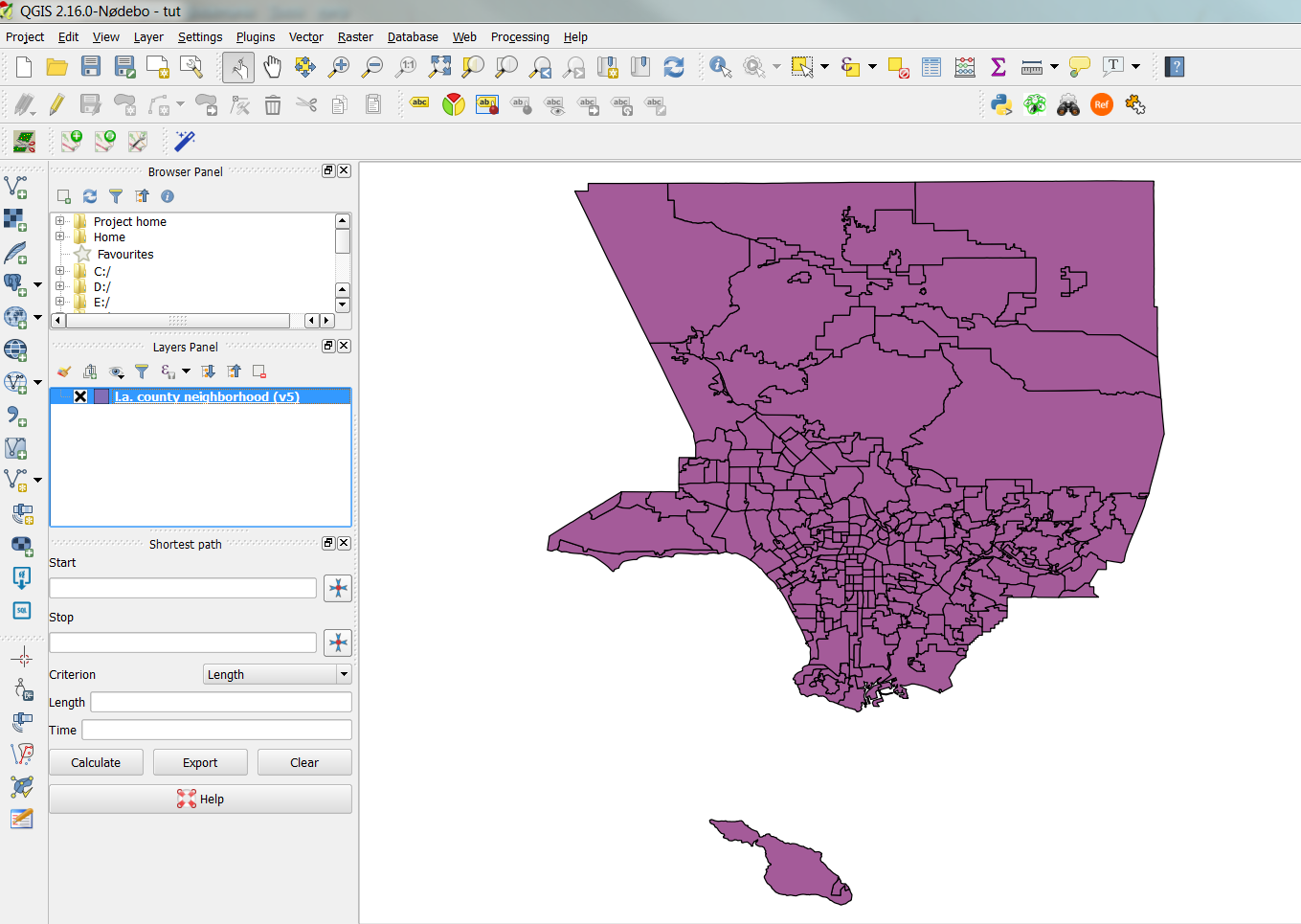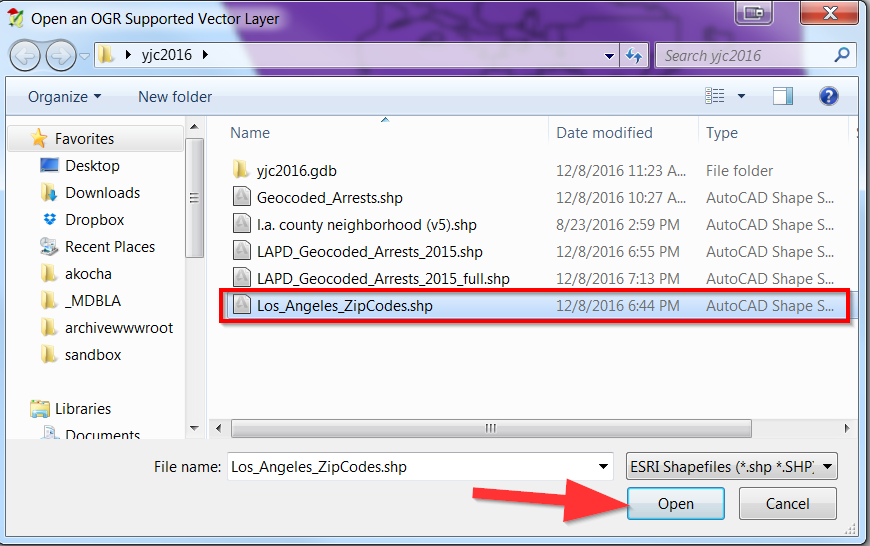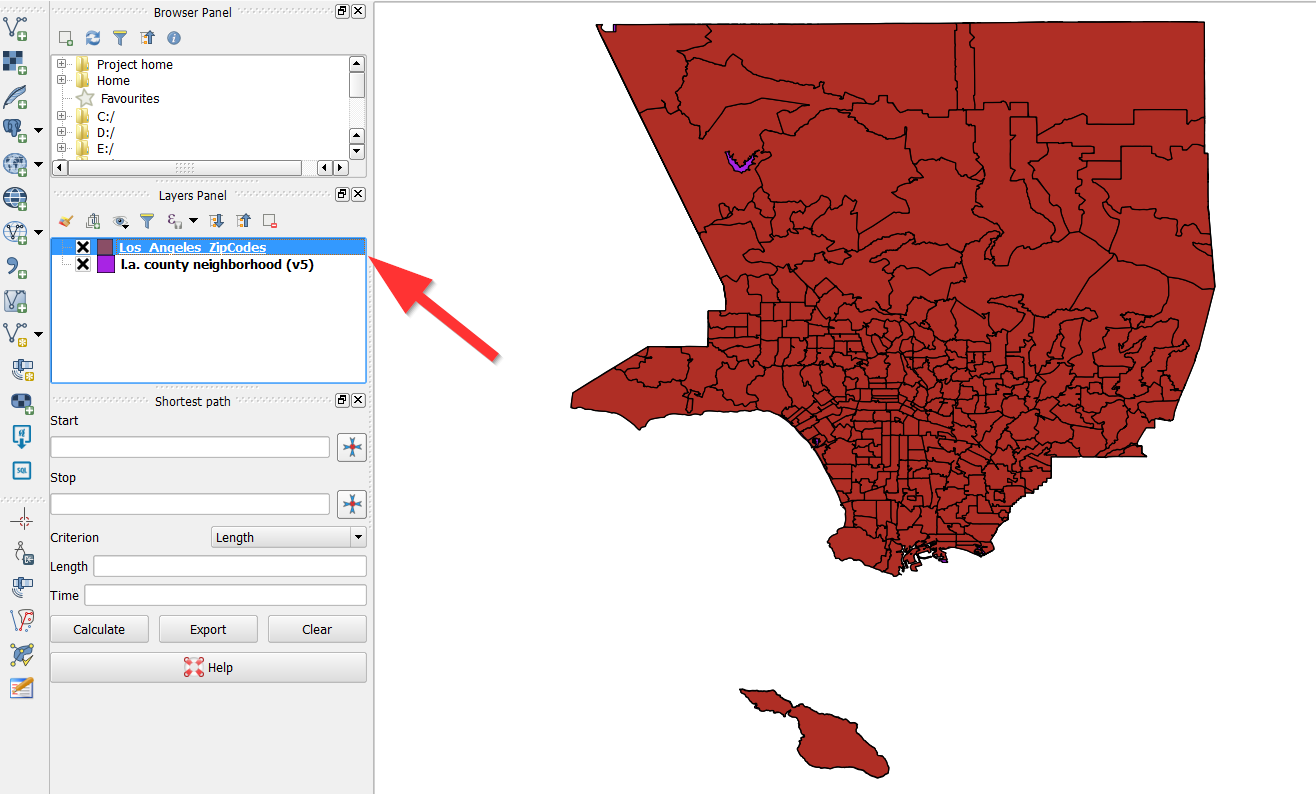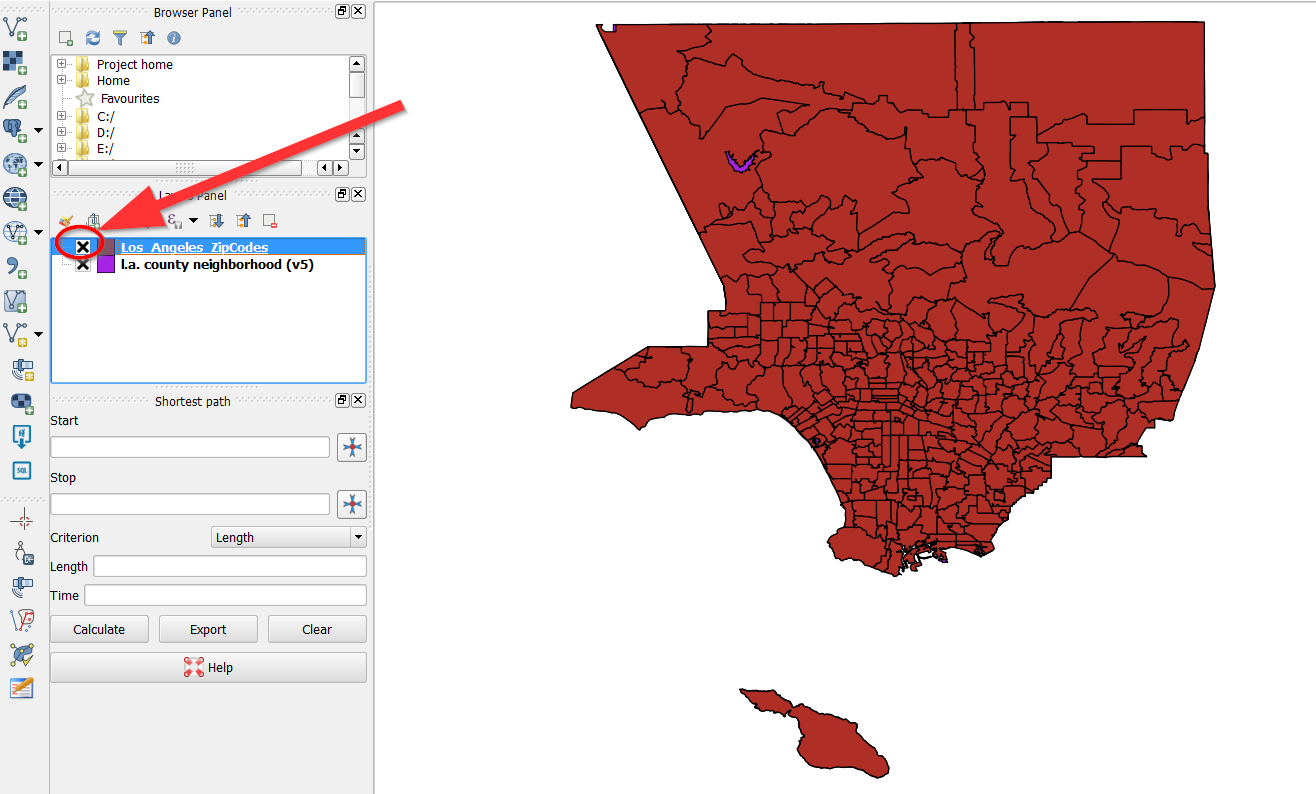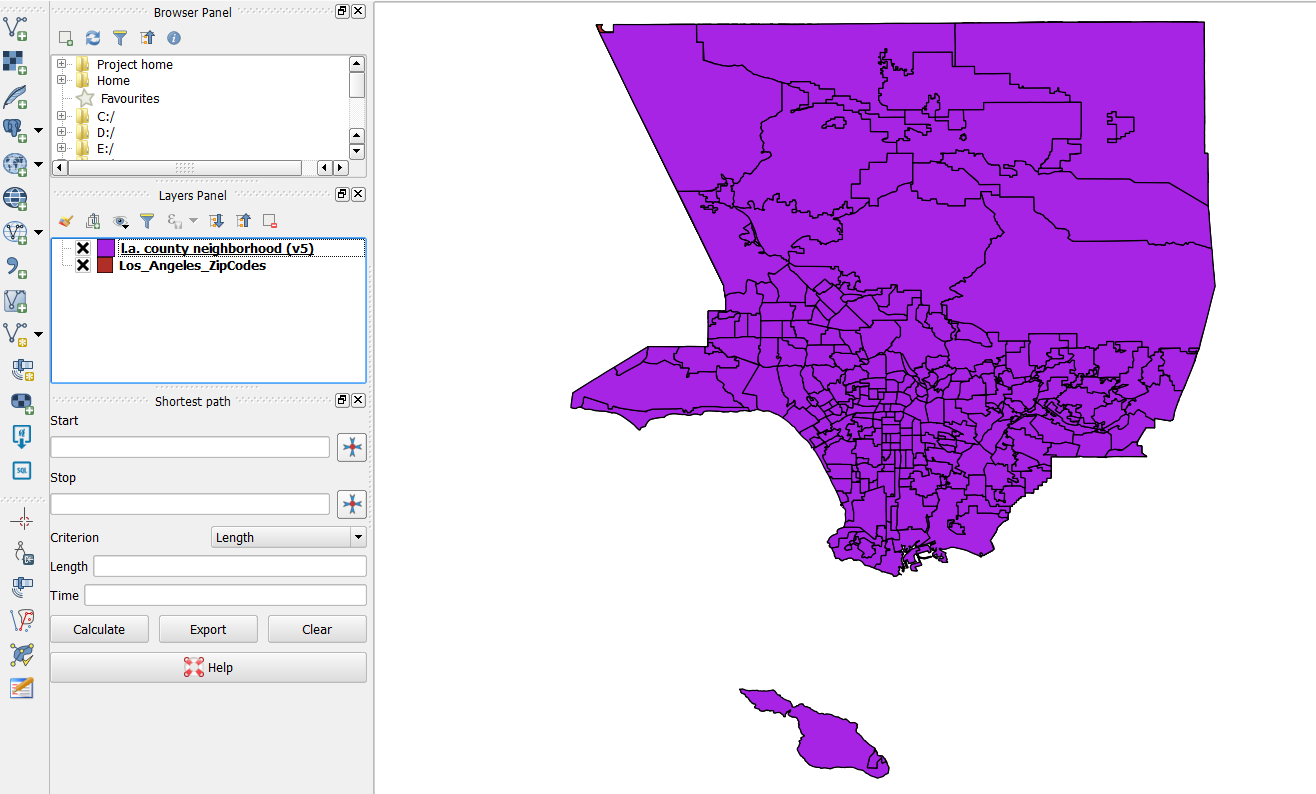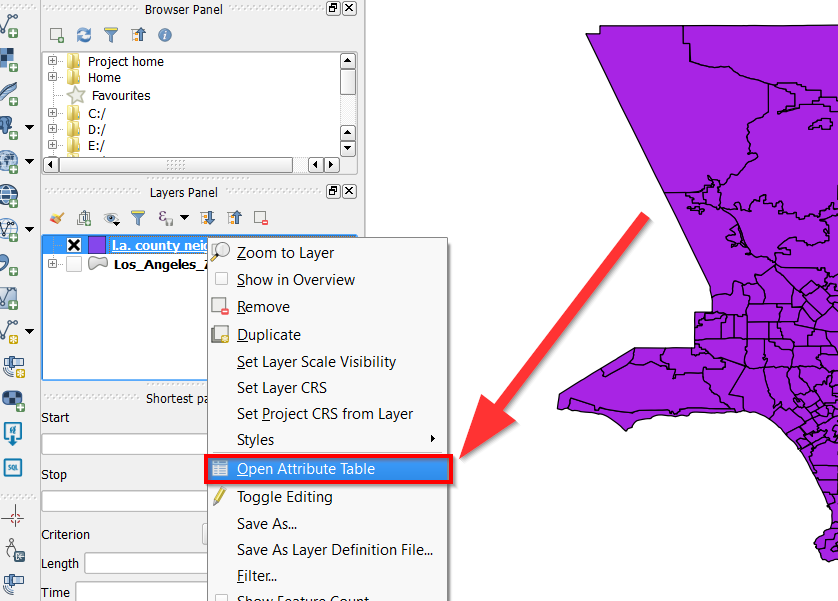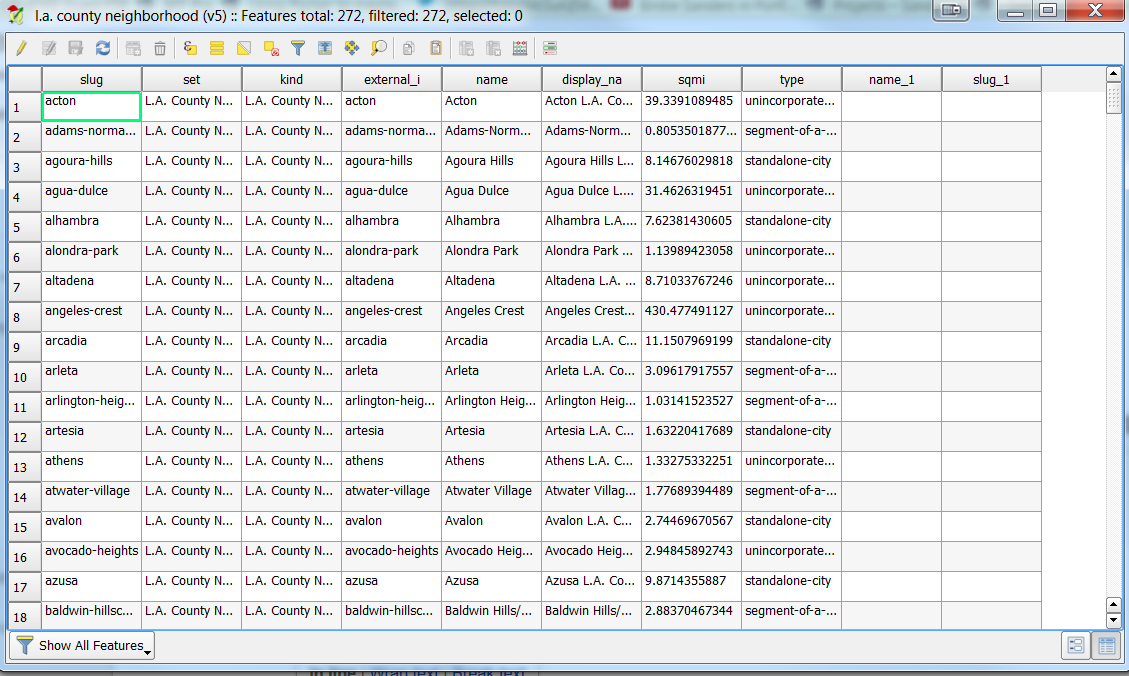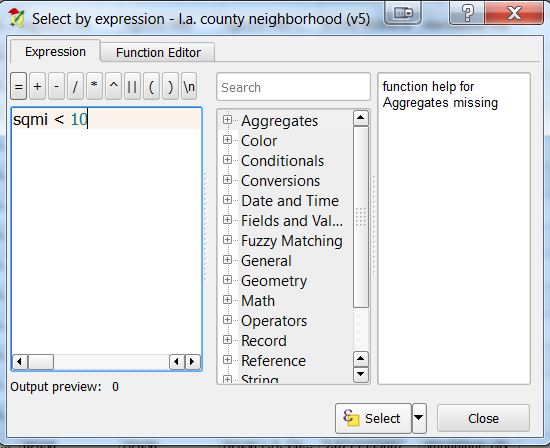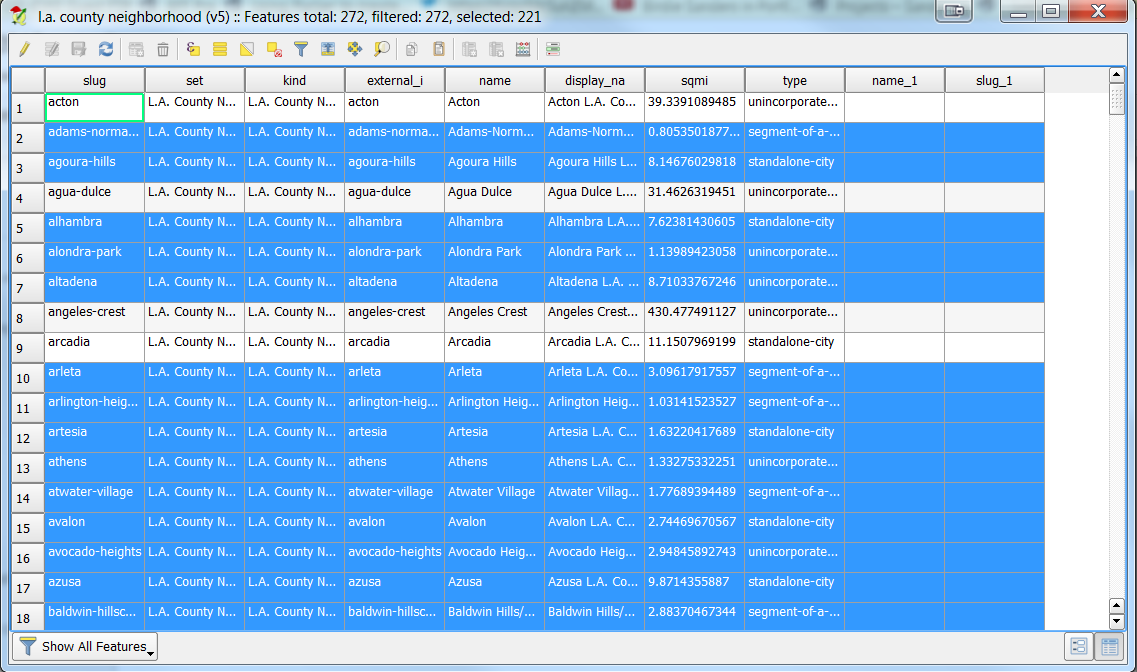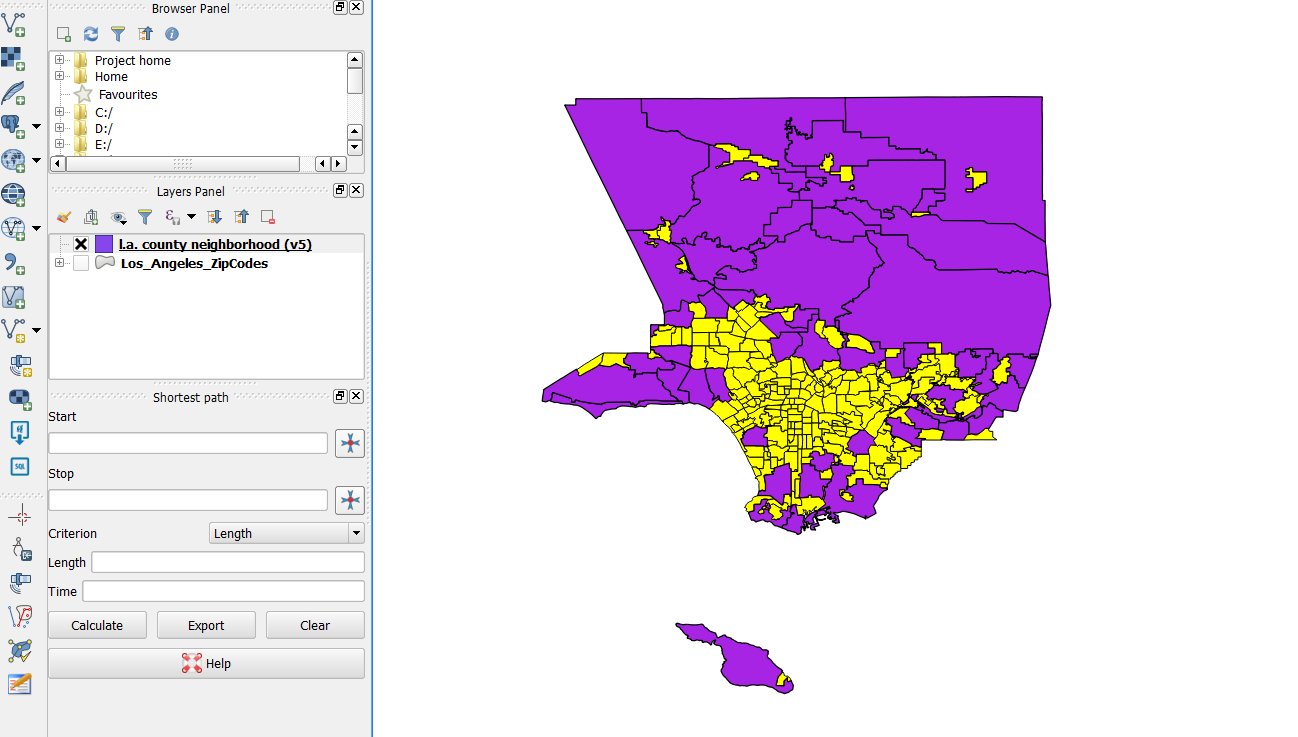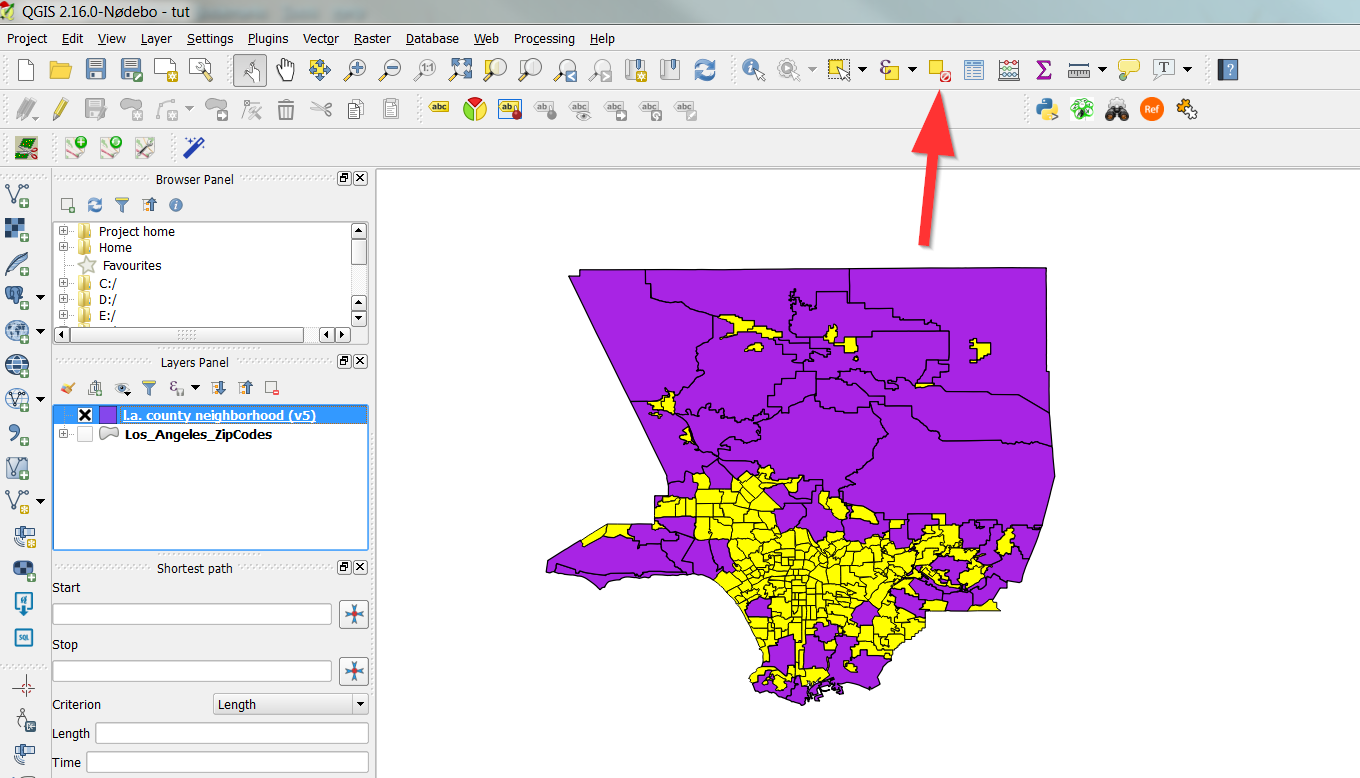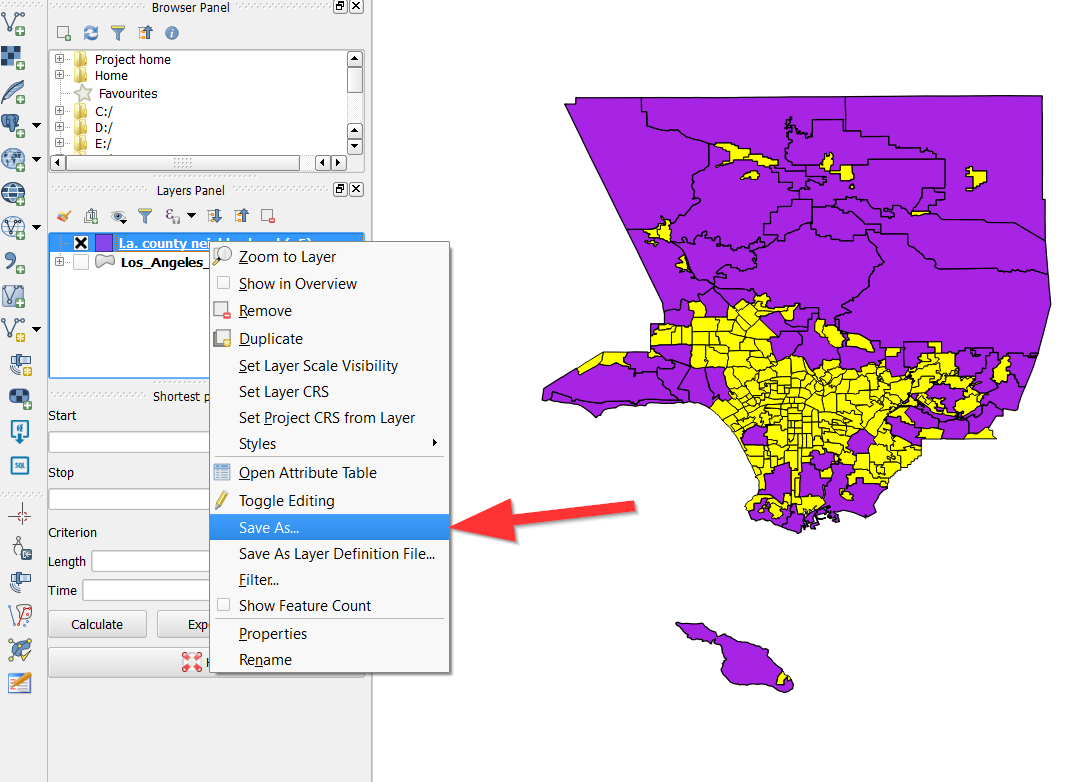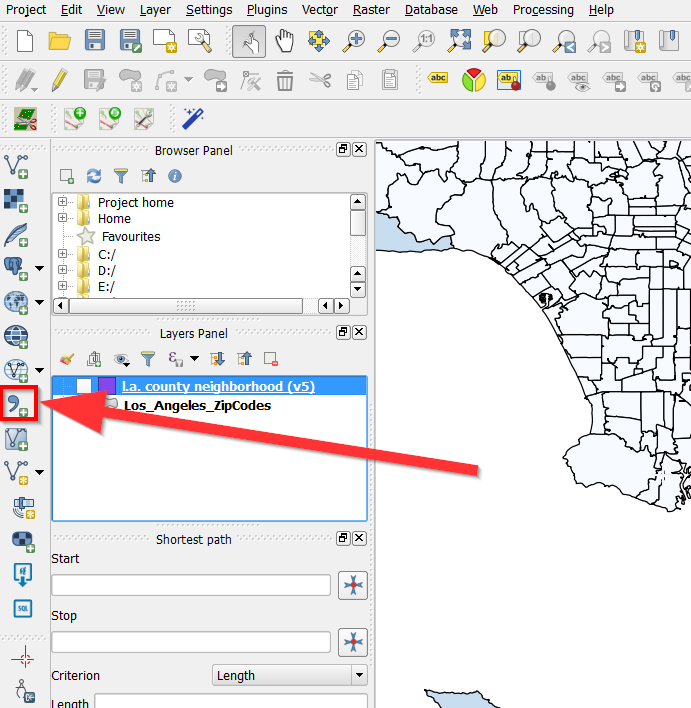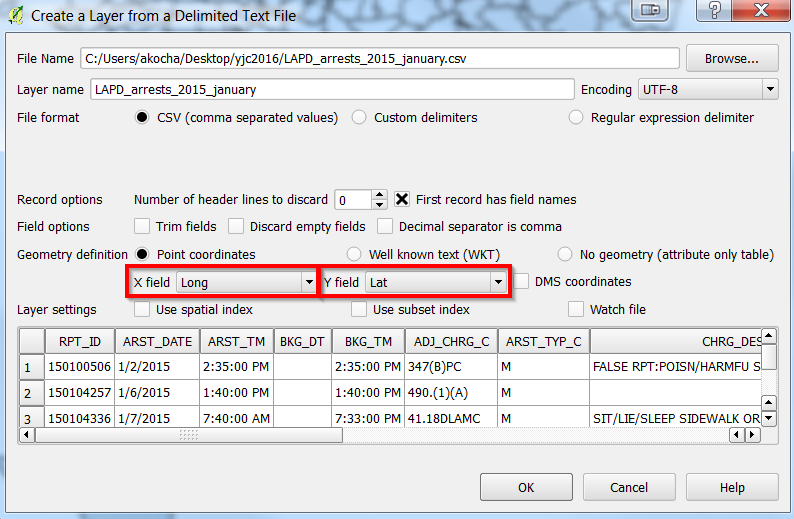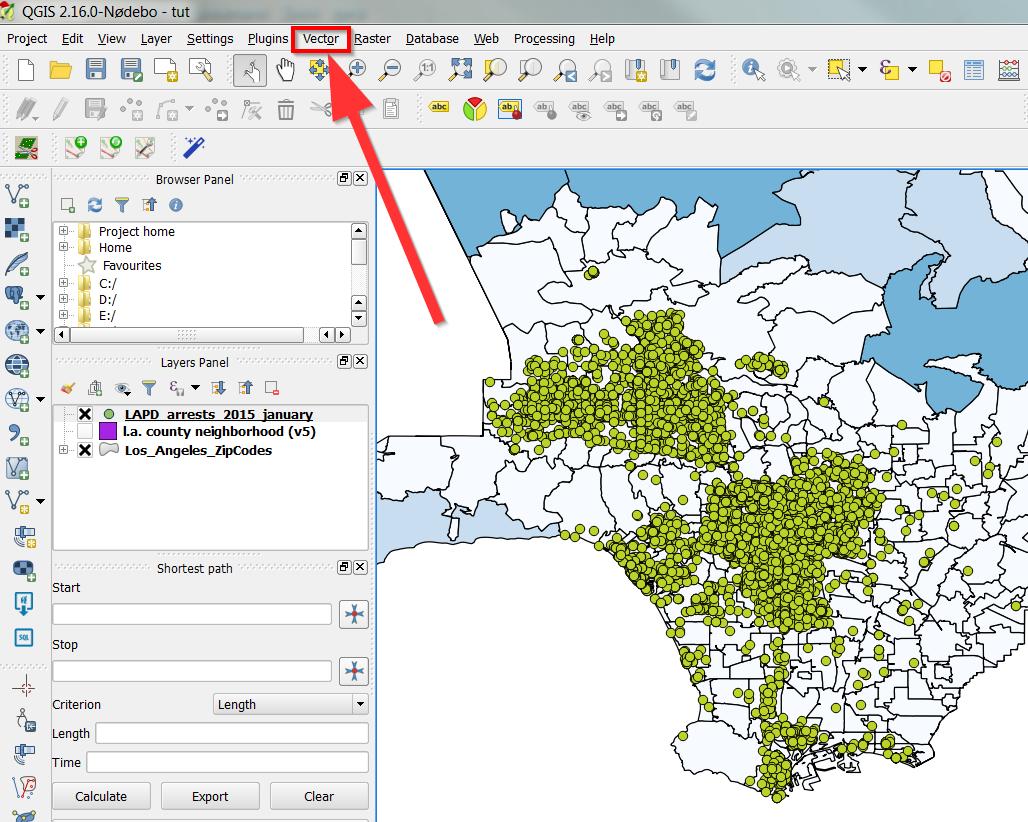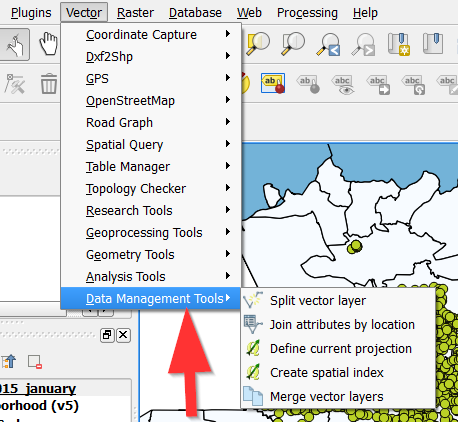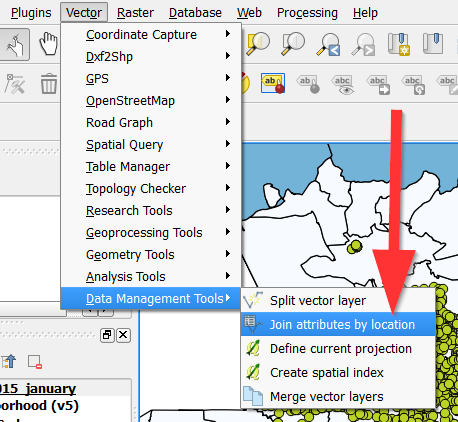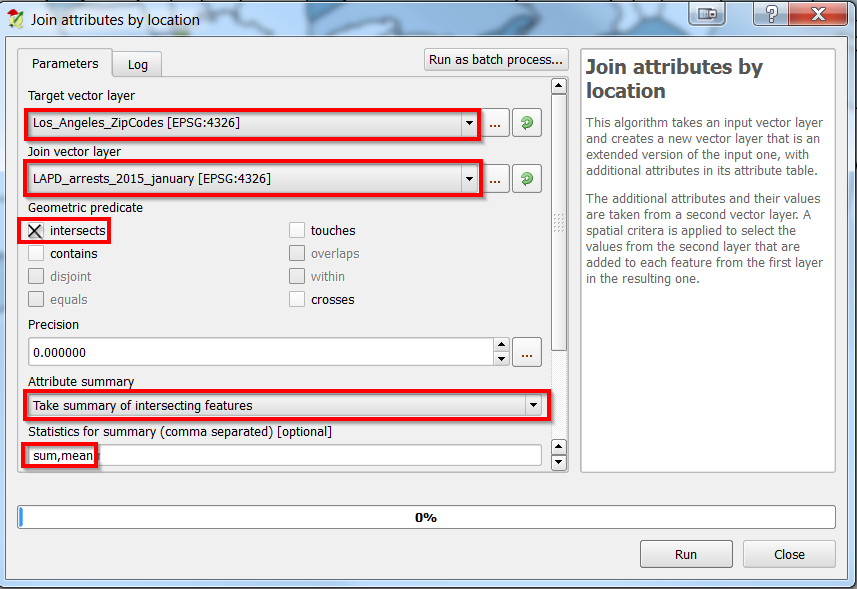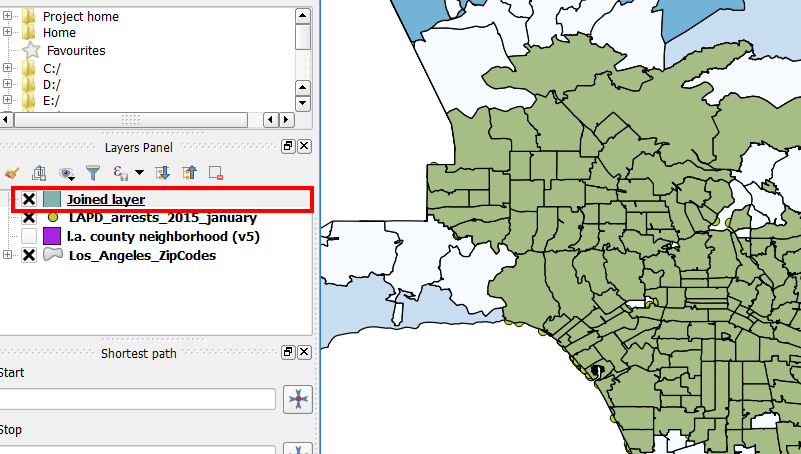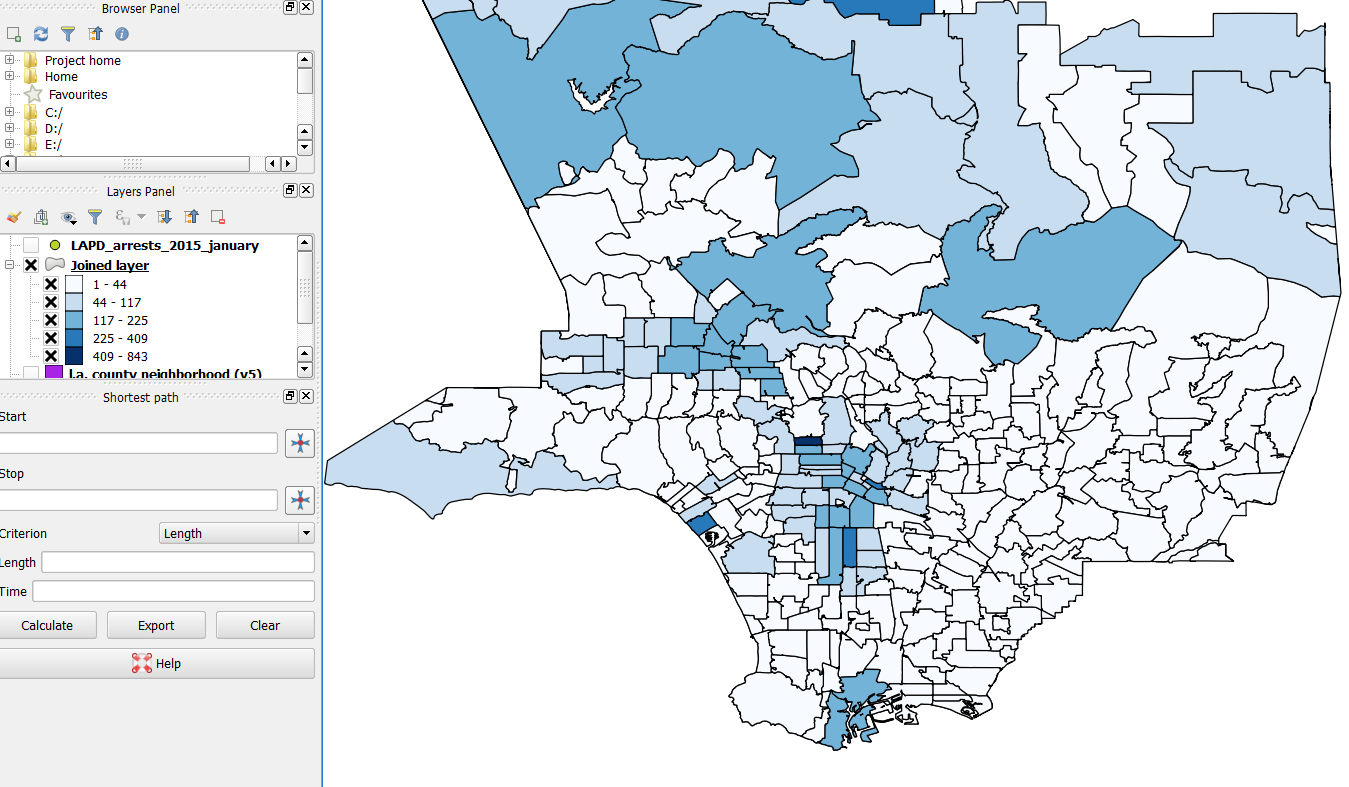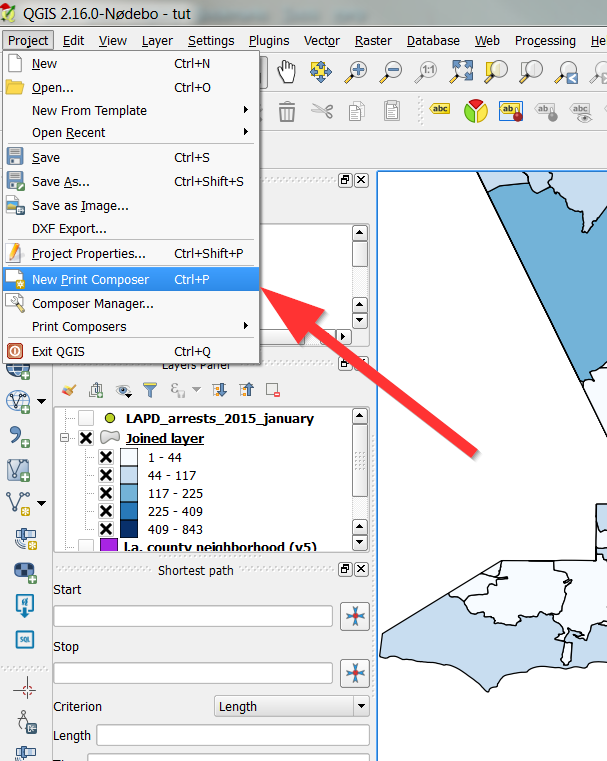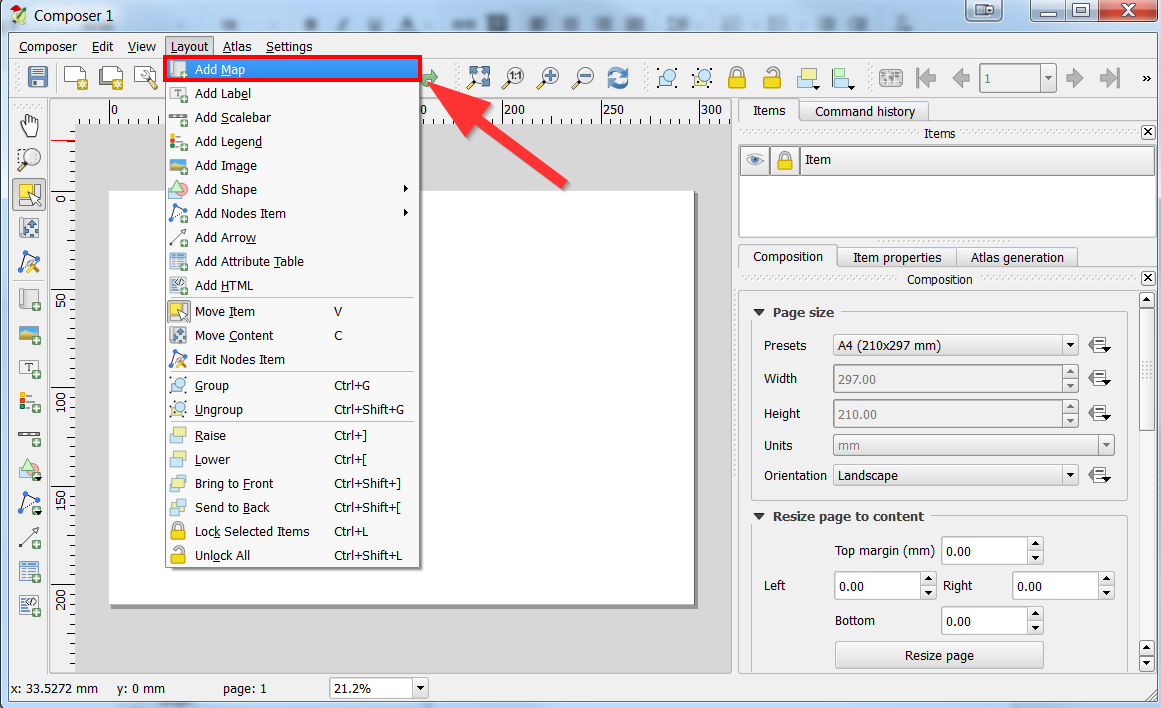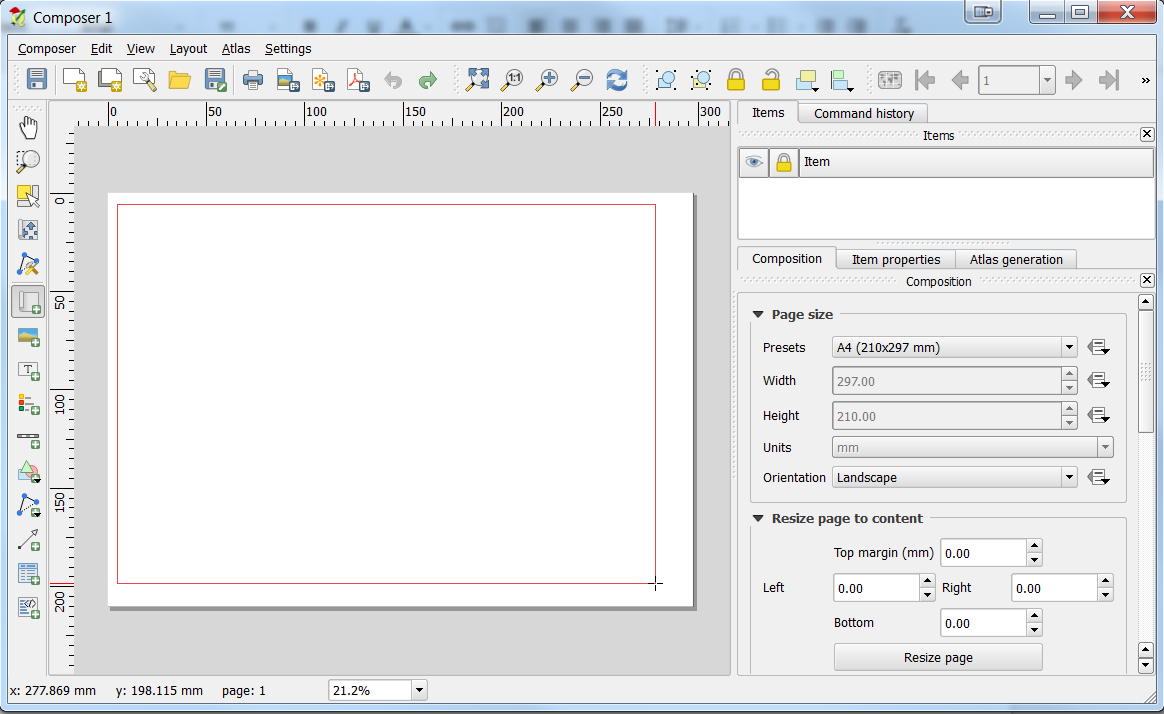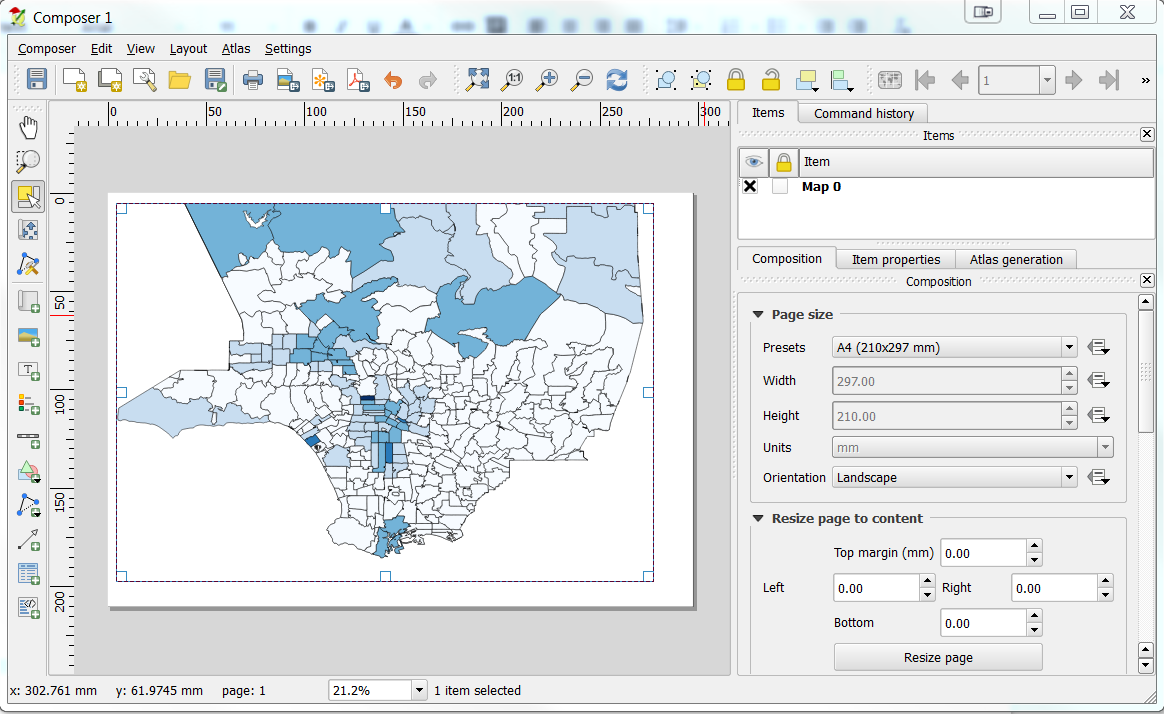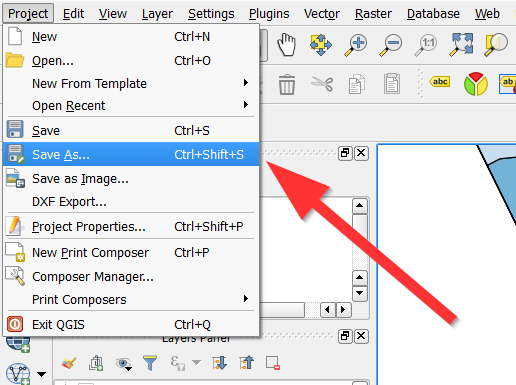Joining Data in QGIS¶
Getting Started¶
Note: This tutorial uses data downloaded from Los Angeles Open Data portal (see: Quick Visual Guide to Visualizing Data on LA Open Data Portal)
Download QGIS if you do not have it installed: http://www.qgis.org/en/site/forusers/download.html ~~~~~~~~~~~~~~~~~~~~~~~~~~~~~~~~~~~~~~~~~~~~~~~~~~~~
Next download the following datasets:¶
http://boundaries.latimes.com/1.0/boundary-set/la-county-neighborhoods-v5/?format=shphttp://sandbox.idre.ucla.edu/mapshare/data/usa/census/Los_Angeles_ZipCodes.zip
Most GIS files (also called shapefiles) will be in a zipped format, so be sure to unzip them!
Mac Example:https://asmand.files.wordpress.com/2015/09/unzip-mac.gif
PC Example:https://www.youtube.com/watch?v=ZQOYqzGHiDY
How to add vector data¶
Working with layers:¶
It appears on top of the La county neighborhood (v5) layer which masks it from view.
You can right click or cmd + click on the layer to do various things, such as open an attribute table, remove the layer, or copy it.
Let’s click on “Open Attribute Table”:
- Both in the table and map, the yellow rows are what is less than 10 square miles:
Taking data out of QGIS¶
Sometimes you want to take data out of QGIS to manipulate it in other software, such as Excel. You can do so, by opening the layer properties and clicking save as:
You can now choose a file type and name, make sure to select “CSV”:
Add a CSV file in QGIS¶
After finding the file, a new dialogue box will show up. Be sure to have Lat and Long selected for the X and Y values [X is always Longitude and Y is always Latitude]:
Spatial Joining Data¶
- Make sure you have the two layers you want to join together, in this case the LAPD_arrests_2015_january.csv and the Los_Angeles_ZipCodes.
5. The target layer should be the layer you want the data to go towards, the join layer is the layer you are taking the information from. So in this case, the Target is the Los Angeles ZipCodes, while the Join is the LAPD_arrests_2015_january.
- Make sure to choose “Intersects” for the Geometric Predicate.
- Be sure to select “Take a summary of Intersecting Features” and you only need “sum” and “mean” for the Statistics field.
- Click “Run” to run the join.
- Go ahead and open the attribute table and see if the “sum” worked!
- Try and visualize the data like so:
Exporting a map¶
QGIS has a tool called “Print Composer” to take care of all your map printing needs. You can find it by going to “File” then “New Print Composer”
After opening a new print composer, you should add a map, which can by done by going to “Layout” then “Add new map”:
You can also add text, shapes and other content.
When you are done using QGIS, you can save your project as a QGIS file:
